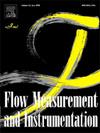开发和校准用于水位测量的低成本激光雷达传感器
IF 2.3
3区 工程技术
Q2 ENGINEERING, MECHANICAL
引用次数: 0
摘要
随着城市的无序发展和对自然资源不负责任的开采,环境灾害也随之增加。波索斯-德-卡尔达斯市(巴西米纳斯吉拉斯州)水文灾害频发,再加上该地区地貌的特殊性,因此需要对强降水进行深入分析,考虑其特点和后果。本研究对用于水文测量的线划仪和激光传感器进行了比较分析,指出了两种系统的主要异同和优缺点。低成本激光雷达传感器获得的数值与使用线划仪获得的数值一致,而线划仪则更为昂贵,这表明激光传感器在安装和使用方面都具有优势,因此也可以取代线划仪。激光传感器相对于公制物理刻度的精度为 ±0.05 米,适用于涉及水体水位测量的应用。本文章由计算机程序翻译,如有差异,请以英文原文为准。
Development and calibration of a low-cost LIDAR sensor for water level measurements
Environmental disasters increase along with disorganized urban growth and irresponsible exploitation of natural resources. The recurrence of hydrological disasters in the municipality of Poços de Caldas (Minas Gerais, Brazil), combined with the geomorphological specificities of the region, result in a demand for an in-depth analysis related to intense precipitation, considering its characteristics and consequences. This study presents a comparative analysis between a linigraph and a laser sensor for fluviometric measurement, pointing out the main differences, similarities, advantages and disadvantages of both systems. The values obtained by the low-cost LIDAR sensor were in agreement with those achieved using the linigraph, which is more expensive, thus demonstrating that the laser sensor can also replace it due to both installation and usage advantages. The laser sensor showed an accuracy of ±0.05 m relative to a metric physical scale, which is considered suitable for applications involving water level measurements in water bodies.
求助全文
通过发布文献求助,成功后即可免费获取论文全文。
去求助
来源期刊

Flow Measurement and Instrumentation
工程技术-工程:机械
CiteScore
4.30
自引率
13.60%
发文量
123
审稿时长
6 months
期刊介绍:
Flow Measurement and Instrumentation is dedicated to disseminating the latest research results on all aspects of flow measurement, in both closed conduits and open channels. The design of flow measurement systems involves a wide variety of multidisciplinary activities including modelling the flow sensor, the fluid flow and the sensor/fluid interactions through the use of computation techniques; the development of advanced transducer systems and their associated signal processing and the laboratory and field assessment of the overall system under ideal and disturbed conditions.
FMI is the essential forum for critical information exchange, and contributions are particularly encouraged in the following areas of interest:
Modelling: the application of mathematical and computational modelling to the interaction of fluid dynamics with flowmeters, including flowmeter behaviour, improved flowmeter design and installation problems. Application of CAD/CAE techniques to flowmeter modelling are eligible.
Design and development: the detailed design of the flowmeter head and/or signal processing aspects of novel flowmeters. Emphasis is given to papers identifying new sensor configurations, multisensor flow measurement systems, non-intrusive flow metering techniques and the application of microelectronic techniques in smart or intelligent systems.
Calibration techniques: including descriptions of new or existing calibration facilities and techniques, calibration data from different flowmeter types, and calibration intercomparison data from different laboratories.
Installation effect data: dealing with the effects of non-ideal flow conditions on flowmeters. Papers combining a theoretical understanding of flowmeter behaviour with experimental work are particularly welcome.
 求助内容:
求助内容: 应助结果提醒方式:
应助结果提醒方式:


